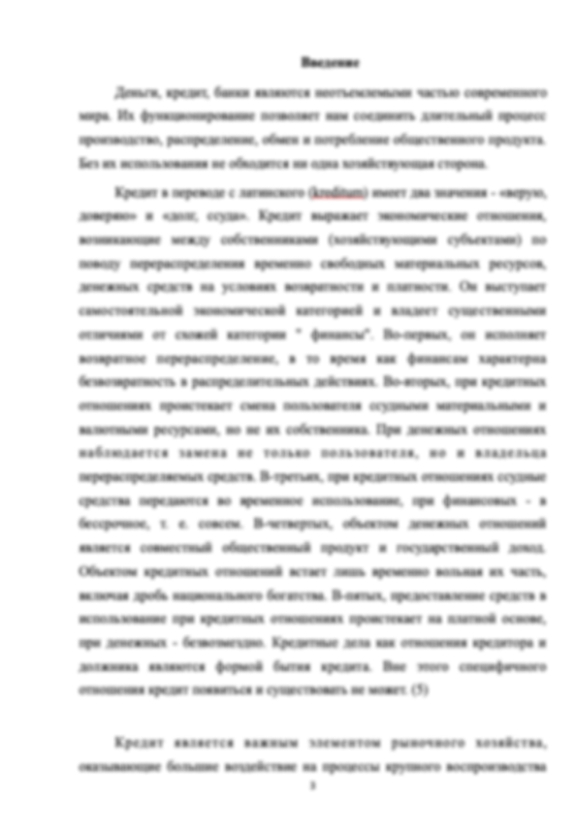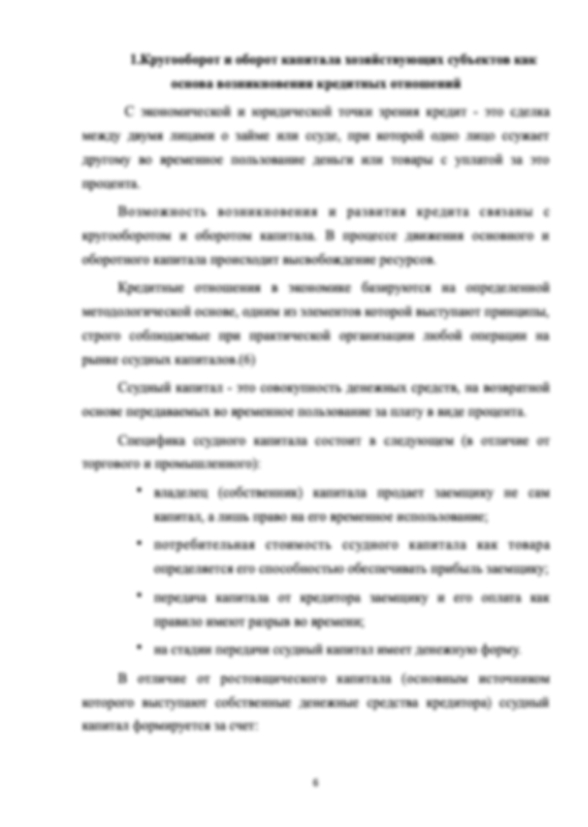Отличный автор, быстро выполнена работа, оценка преподавателя 100 б ,Буду обращаться еще
Информация о работе
Подробнее о работе

Реферативный перевод.
- 29 страниц
- 2017 год
- 83 просмотра
- 0 покупок
Гарантия сервиса Автор24
Уникальность не ниже 50%
Фрагменты работ
In this Very Short Introduction, David Bender explains the basic elements of food, the balance between energy intake and exercise, the problems of over- and under-nutrition, and raises questions on the safety of nutritional supplements. Looking broadly at what constitutes nutrition, Bender provides insight into a topic of wide interest and importance in today's world. With a look at diet in relation to nutrition, this Very Short Introduction provides an overview of the biochemistry of nutrition and the health risks associated with poor nutrition- including obesity and types of food allergies. It provides an essential guide to effectively understand the principles of, and necessary reasons for, a healthy diet.
INTRODUCTION 4
1 WHY EAT? 5
1.2 Hunger, satiety, and appetite 6
2 DIET AND HEALTH 9
2.1 Guidelines for a prudent diet 11
3 VITAMINS AND MINERALS 14
4 FUNCTIONAL FOODS, SUPERFOODS, AND SUPPLEMENTS 19
CONCLUSION 23
BIBLIOGRAPHY 24
DICTIONARY 25
CONVERSATIONAL TOPIC 29
1 Why eat? – ЗАЧЕМ ЕСТЬ?
A healthy adult eats about a tonne of food a year. Clearly, we eat because we are hungry. However, why have we evolved such complex physiological and psychological mechanisms to control not only hunger and satiety, but also our appetite for different types of food? Why do meals form such an important part of our life?
There is an obvious need for energy from food to perform physical work. Work has to be done to lift a load against the force of gravity and there must be a source of energy to perform that work. The energy used in various activities can be measured, as can the energy yield of the foods that provide the fuel for that work. Fats, carbohydrates, protein, and alcohol all provide metabolic fuels.
The body’s first need is for water. The human body contains about 60 per cent water – a total of 42 litres in a 70 kg person.
...
1.2 Hunger, satiety, and appetite – Голод, сытость и аппетит
Human beings have evolved an elaborate system of physiological mechanisms to ensure that the body’s needs for metabolic fuels and nutrients are met, and to balance food intake with energy expenditure. The physiological systems for the control of appetite interact with psychological, social, environmental, and genetic factors, all of which have to be understood in order to understand eating behaviour.
In addition to hunger and satiety, which are basic physiological responses, food intake is controlled by appetite, which is related not only to physiological need but also to the pleasure of eating-flavour, texture, and a variety of social and psychological factors. In addition, we become accustomed to eating at a set time, and the clock can provide a cue to eat.
In addition to the sensations of taste provided by the taste-buds on the tongue, a great many flavours can be distinguished by the sense of smell.
...
2 DIET AND HEALTH – ДИЕТА И ЗДОРОВЬЕ
Patterns of disease and mortality differ around the world, and one of the factors that can be correlated with many of the differences is diet, although there are obviously other environmental (and genetic) factors involved.
Different types of epidemiological study can give information about diet and health. The first clues often come from looking at changes in diet over the past 100 or so years, coupled with changes in the pattern of disease. Such studies suggest that, in parallel with the increase in atherosclerosis, cardiovascular disease, and cancer, there have been increases in the total amount of fat and sugar consumed, with a reduction in starch and dietary fibre.
A great deal can be learnt from studying people who have migrated from one country to another, and comparing their patterns of disease, and their diets, with relatives who have remained in the mother country.
...
2.1 Guidelines for a prudent diet – Рекомендации по рациональному питанию
These epidemiological and experimental studies have provided evidence for a dietary pattern that is associated with reduced risk of developing cancer, atherosclerosis and cardiovascular disease, hypertension and stroke, and type II diabetes.
Polyunsaturated fatty acids. The major dietary sources of ω6 polyunsaturated fatty acids are plant oils, and the major sources of ω3 fatty acids are oily fish such as salmon, trout, and herring, as well as fish liver oils.
Dietary fibre. All plant foods contain dietary fibre in varying amounts. Whole grain cereals are an especially rich source, but much is lost when wheat is refined to produce white flour [3].
Dietary fibre also physically adsorbs a number of compounds in the diet that are potentially liable to cause cancer, so preventing their absorption.
Fruits and vegetables – five servings a day.
...
3 VITAMINS AND MINERALS – ВИТАМИНЫ И МИНЕРАЛЫ
In addition to sources of energy and protein, there is a need for two further groups of nutrients in the diet, in relatively small amounts: mineral salts and vitamins. They are essential for maintenance of normal health, growth, and metabolic integrity [5].
Iron. The greatest need for iron in the body is for synthesis of the protein hemoglobin, which transports oxygen in red blood cells.
Calcium. The body contains about 1kg of calcium, of which 99 per cent is in bones and teeth. Milk and dairy products are the main source of calcium in the diet, but cereals, fruits, and vegetables provide significant amounts. The plasma concentration of calcium is tightly regulated. An excessively high plasma concentration of calcium can lead to calcification and hardening of soft tissues, including blood vessels [5,6].
Iodine.
...
4 FUNCTIONAL FOODS, SUPERFOODS, AND SUPPLEMENTS – ФУНКЦИОНАЛЬНЫЕ ПРОДУКТЫ ПИТАНИЯ, СУПЕРПРОДУКТЫ И ДОБАВКИ
The concept of functional foods was developed in Japan in the 1980s, with a formal definition of “foods for specified health use” (FOSHU), accompanied by a regulatory system to approve the statements made on labels and in advertising, based on scientific evaluation of the evidence of efficacy and safety.
There is abundant evidence that consumption of plant sterols and stanols lowers blood cholesterol, and the effect is additive to that of statins, the drugs that inhibit cholesterol synthesis. Plant sterols and stanols are found in moderate amounts in fruits, vegetables, nuts, and vegetable oils [8].
Superfoods are ordinary foods that are especially rich in nutrients or antioxidants and other potentially protective compounds, including polyunsaturated fatty acids and dietary fibre.
...
BIBLIOGRAPHY
1. Bender, D. A. (2014) Introduction to Nutrition and Metabolism, 5th edition, CRC Press, Boca Raton, Florida.
2. Gibney, M. J., Lanham-New, S. A., Cassidy A., and Vorster, H. H. (2009) Introduction to Human Nutrition, 2nd edition, The Nutrition Society Textbook series, Wiley-Blackwell, Chichester.
3. Govind Shukla, Sangita Kumari, Anna Victoria, Zamora Maguddayao, Shivani Prashar, C.J. Sampath Kumar: NUTRACEUTICALS: THE FUTURE THERAPEUTICS — International Journal of Pharmacology & Toxicology ISSN - 2249-7668 / 4(3), 2014, 146—150.
4. Howell E. Enzyme Nutrition: The Food Enzyme Concept. — Wayne N.J. (USA): Avery Publishing Group Inc., 1985. ASIN: B001MZ32UC; ISBN 0895292211 (1995)
5. Food, nutrition, and the prevention of cancer: a global perspective. Washington, DC: World Cancer Research Fund/American Institute for Cancer Research, 1997. PMID: 10378216, 2007
6. Curley, S., and Mark (1990).
...
DICTIONARY
№
Слово
Перевод
1
2
3
4
5
6
7
8
9
10
11
12
13
14
15
16
17
18
19
20
21
22
23
24
25
26
27
28
29
30
31
32
33
34
35
36
37
38
39
40
41
42
43
44
45
46
47
48
49
50
51
52
53
54
55
56
57
58
59
60
61
62
63
64
65
66
67
68
69
70
71
72
73
74
75
76
77
78
79
80
81
82
83
84
85
86
87
89
90
91
92
93
94
95
96
97
98
99
100
аnaemia
аntioxidants
аppetite
вalanced plate
calcium
calorie
cancer
carbohydrate restriction
carotene
cholesterol
dietary fibre
dietary guidelines
dietary supplements
energy balance
energy expenditure
epidemiology
ferritin
fish oil
flavonoids
fluid requirements
folic acid
food behaviour
food choices
food combining diet
free radicals
grapefruit
green revolution
healthy eating
hunger centres
intrinsic factor
iodine
iodized salt
iron
kilocalorie
labelling
lactic acid
lactic acid bacteria
leptin
metabolic rate
metabolic water
minerals
mono-unsaturated fat
niacin
nicotinic acid
nitrogen balance
nutritional labelling
organic foods
osteomalacia
osteopo.
...
1. Bender, D. A. (2014) Introduction to Nutrition and Metabolism, 5th edition, CRC Press, Boca Raton, Florida.
2. Gibney, M. J., Lanham-New, S. A., Cassidy A., and Vorster, H. H. (2009) Introduction to Human Nutrition, 2nd edition, The Nutrition Society Textbook series, Wiley-Blackwell, Chichester.
3. Govind Shukla, Sangita Kumari, Anna Victoria, Zamora Maguddayao, Shivani Prashar, C.J. Sampath Kumar: NUTRACEUTICALS: THE FUTURE THERAPEUTICS — International Journal of Pharmacology & Toxicology ISSN - 2249-7668 / 4(3), 2014, 146—150.
4. Howell E. Enzyme Nutrition: The Food Enzyme Concept. — Wayne N.J. (USA): Avery Publishing Group Inc., 1985. ASIN: B001MZ32UC; ISBN 0895292211 (1995)
5. Food, nutrition, and the prevention of cancer: a global perspective. Washington, DC: World Cancer Research Fund/American Institute for Cancer Research, 1997. PMID: 10378216, 2007
6. Curley, S., and Mark (1990). The Natural Guide to Good Health, Lafayette, Louisiana, Supreme Publishing.
7. Carpenter, Kenneth J. (1994). Protein and Energy: A Study of Changing Ideas in Nutrition. Cambridge University Press.
8. Mahan, L.K. and Escott-Stump, S. eds. (2000). Krause's Food, Nutrition, and Diet Therapy (10th ed.). Philadelphia: W.B. Saunders Harcourt Brace.
9. Thiollet, J.-P. (2001). Vitamines & minéraux. Paris: Anagramme.
10. Walter C. Willett; Meir J. Stampfer (January 2003). "Rebuilding the Food Pyramid". Scientific American. 288 (1): 64–71.
Форма заказа новой работы
Не подошла эта работа?
Закажи новую работу, сделанную по твоим требованиям


